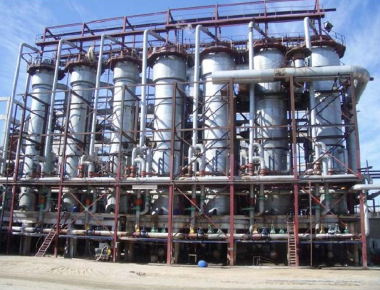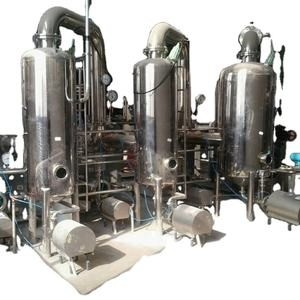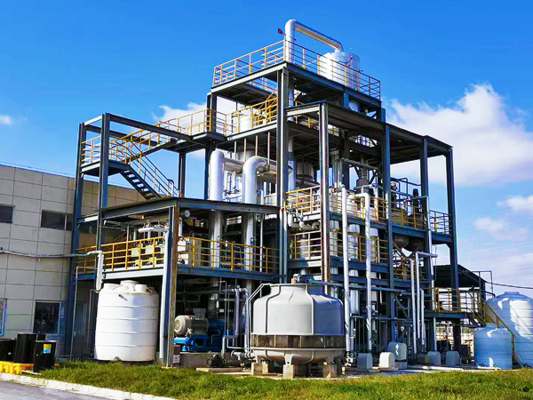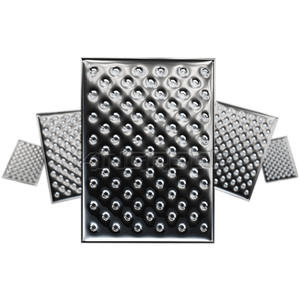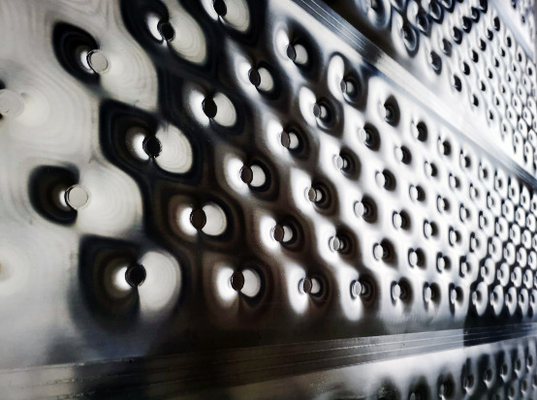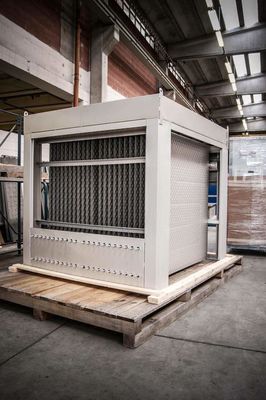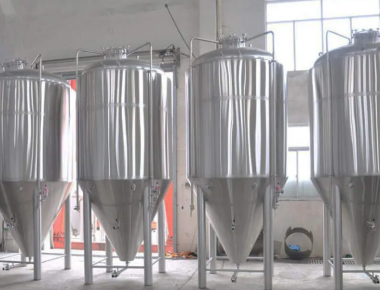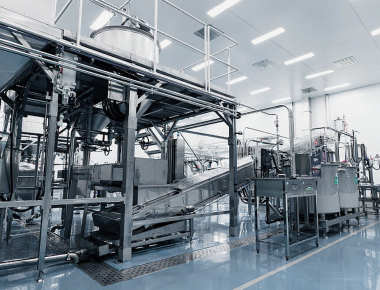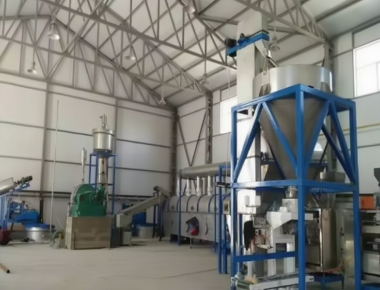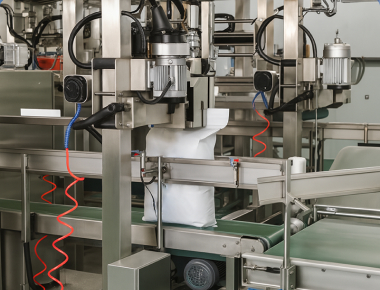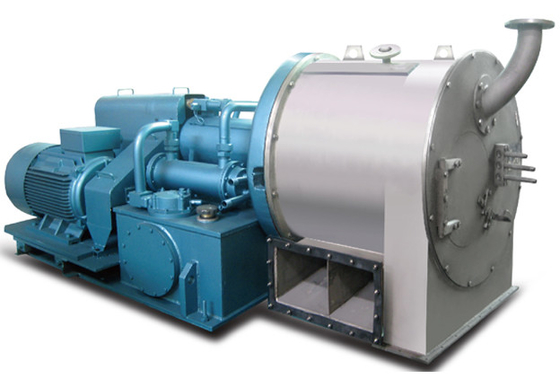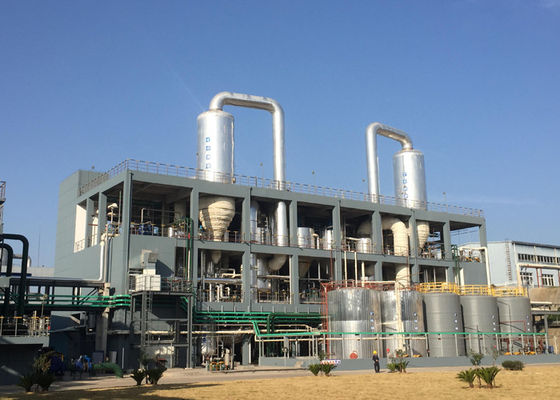Consumption Saving Ti MVR System For NaCl Evaporative Crystallization

The Titanium (Ti) MVR evaporation & crystallization system is purpose-built for table salt and industrial salt. By mechanically recompressing and reusing latent heat, it cuts specific energy use and fresh steam demand while delivering consistent crystal quality and narrow size distribution.
- Significant energy savings: primarily electric-driven; fresh steam used mainly at start-up or for trim under extreme conditions
- Chloride corrosion resistance: titanium (Gr.2/Gr.12) on critical heat-transfer and pressure parts minimizes pitting and crevice corrosion
- Consistent crystal quality: controlled supersaturation and residence time yield uniform NaCl crystals
- Long campaigns: sanitary design and CIP shorten downtime and extend heat-exchanger cleanliness intervals
Why Ti MVR for NaCl Crystallization?
MVR compresses secondary vapor to a higher temperature and reuses it as the heating medium, dramatically reducing energy per unit of water evaporated. Titanium's superior resistance to chloride media at elevated temperatures curbs fouling/corrosion-driven efficiency loss and unplanned outages.
Energy KPI
Typical power consumption ≈ 15-35 kWh per ton of water evaporated (depends on compression ratio, ΔT and heat-transfer area). Cooling water and boiler load are greatly reduced.
Crystal Quality
Forced-circulation (FC) crystallizer maintains stable heat-transfer coefficients and slurry density, producing a tight particle size distribution (table-salt fraction).
Material Reliability
Titanium tube bundles / Ti-clad plate exchangers on critical duty; duplex stainless steel may be used for structural frames to optimize cost.
Process Flow (NaCl Evaporation & Crystallization)

- Brine make-up & purification: dissolution -> softening (Ca/Mg removal) -> coagulation/clarification -> polishing filtration to minimize insolubles and hardness
- Preheating & de-aeration: stabilizes driving force and lowers corrosion/foaming
- MVR forced-circulation evaporation & crystallization: compressed vapor returns to shell side; supersaturation and slurry density control manage nucleation/growth
- Solid-liquid separation: peeler or pusher centrifuge removes mother liquor; mother liquor recycles to raise overall yield
- Drying & classification: vibrating/fluid-bed drying -> screening -> polishing to reach target size bands
- Iodization & anti-caking: in-line dosing and mixing to meet local regulations
- Packing: 1 kg retail to 25-50 kg bags or bulk; metal detection and weight control
Core Equipment
- Ti shell-and-tube / Ti-clad plate heat exchangers and forced-circulation crystallizer
- High-speed centrifugal/turbo or Roots compressor (selected by compression ratio and duty)
- Vapor-liquid separator, main heater, preheater, condenser and vacuum system
- Brine purification skid (dissolution, softening, clarification, filtration)
- Peeler/pusher centrifuge, fluid-bed/vibratory dryer and screening system
- In-line iodization / anti-caking dosing and blending
- Instrumentation: T/P/flow/conductivity/level; PLC/HMI with historian
- CIP skid with validated procedures and records
Performance & Sizing Inputs
Required data: brine composition (NaCl, Ca/Mg, sulfates/silicates, insolubles), target NaCl grade & size, allowable ΔT, BPE, viscosity-temperature curve, scaling tendency, available utilities and annual operating hours.
| Parameter |
Typical value/range* |
| NaCl (dry basis) |
≥ 99.2% (up to ≈99.7% with enhanced purification) |
| Product moisture |
≤ 0.2% (grade-dependent) |
| Crystal size bands |
Fine 0.2-0.5 mm; Table 0.5-1.2 mm; Coarse 1.2-2.5 mm |
| Line capacity (finished salt) |
5-500 t/d (modular, multi-train) |
| Power (MVR) |
≈ 15-35 kWh per ton of water evaporated |
| CIP interval |
≥ 10-20 days (depends on feed and operating strategy) |
| Primary materials |
Ti Gr.2/Gr.12 for critical wetted surfaces; duplex stainless steel for structural support |
*Actual performance depends on purification efficiency, compressor pressure ratio, heat-transfer area and operating strategy.
Compressor & Energy Optimization
- High-speed centrifugal/turbo: high efficiency; pair with VFD and anti-surge control for medium/large duties
- Roots: simple construction; suitable for small/medium loads and phased retrofits
- Parallel trains: redundancy and flexibility; stage on/off to lower specific power
MVR vs. MEE vs. TVR (for NaCl Crystallization)
| Criterion |
Ti MVR System |
Multi-Effect (MEE) |
TVR |
| Fresh steam dependence |
Very low (mostly electric) |
Medium-high |
Medium |
| Specific energy use |
Low (latent heat reuse) |
Medium (more effects required) |
Medium |
| Corrosion resistance / service life |
High (Ti on critical parts) |
Medium (316L/duplex trade-offs) |
Medium |
| Crystal size control |
Excellent (FC + stable ΔT) |
Good |
Good |
| Start/stop & load following |
Excellent |
Good |
Good |
| Total cost of ownership |
Medium-high (shorter payback) |
Medium |
Medium |
Sample Duty (for Sales Conversations)
Brine: purified NaCl 24-26 wt% -> Target: 0.5-1.2 mm table-salt grade.
Train: Ti heat-surface MVR FC crystallization + peeler/pusher centrifuge + fluid-bed drying + screening + in-line iodization + packing.
Takeaways: very low fresh steam and cooling water, stable mother-liquor recycle, long campaign runs, and consistent crystal quality.
Note: Generic example only. Final design to be validated by lab data and full heat/mass balance.
Quality & Compliance
- ASME/PED pressure-vessel and welding standards
- Hygienic design for product-contact surfaces, full drainability, dead-leg control
- CIP/SIP validation with full material traceability
- Dust control for drying/handling, optional ATEX compliance
FAQ
Why choose titanium instead of 316L?
In chloride brines at elevated temperatures, titanium offers superior resistance to pitting/crevice corrosion, reducing heat-transfer decay and unplanned downtime.
What energy consumption can be achieved?
Well-designed MVR systems typically see 15 -35 kWh per ton of water evaporated; actual results depend on compression ratio, ΔT, heat-transfer area and operating strategy.
How do you manage scaling and CIP frequency?
Front-end softening/clarification/filtration lower scale precursors; during operation, optimize velocity and ΔT; periodic CIP restores heat-transfer efficiency and extends run length.
Can multiple size grades be produced?
Yes--drying plus screening can deliver Fine/Table/Coarse bands, with packaging from small retail to bulk.


 Your message must be between 20-3,000 characters!
Your message must be between 20-3,000 characters! Please check your E-mail!
Please check your E-mail!  Your message must be between 20-3,000 characters!
Your message must be between 20-3,000 characters! Please check your E-mail!
Please check your E-mail! 
